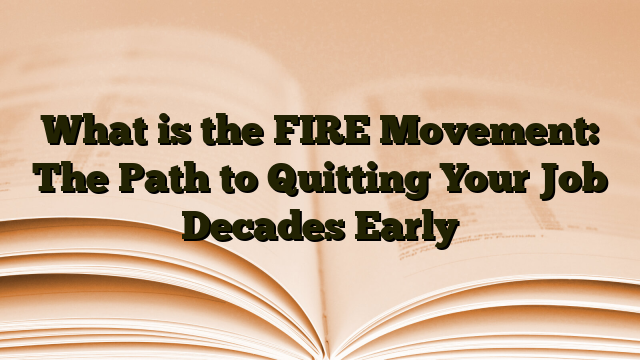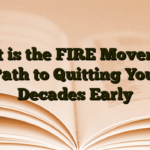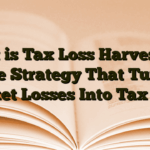Imagine walking into your boss’s office at 35, handing in your resignation, and never having to work another day in your life. Not because you won the lottery or inherited money, but because you systematically built enough wealth to support yourself forever. That’s the promise of the FIRE movement, and it’s changing how an entire generation thinks about retirement.
FIRE stands for Financial Independence, Retire Early. It’s a financial philosophy that flips traditional retirement planning on its head. Instead of working until 65 and hoping you saved enough, FIRE followers save aggressively in their 20s, 30s, and 40s with the explicit goal of escaping the workforce decades before their peers.
I’ve spent the last five years studying this movement, watching friends pursue it, and implementing many of its principles myself. Here’s everything you need to know about whether FIRE is right for you.

How the FIRE Movement Actually Works
The core concept is deceptively simple: save and invest a massive percentage of your income so you can live off your investments for the rest of your life. We’re not talking about the standard 10-15% savings rate financial advisors recommend. FIRE followers typically save 50-75% of their income.
Let me give you a concrete example. Meet Sarah, a software engineer earning $100,000 per year. In a traditional scenario, she might save $15,000 annually and work until 65. Under FIRE principles, Sarah lives on $40,000 and invests $60,000 every year. At that rate, she could potentially retire in her early 40s instead of at 65.
The math behind FIRE relies on two key principles: compound interest and the 4% rule. Compound interest does the heavy lifting, turning your early contributions into massive growth over time. The 4% rule, based on the Trinity Study, suggests you can safely withdraw 4% of your portfolio each year without running out of money.
Calculating Your FIRE Number: The Magic Formula
Your FIRE number is the total amount you need invested to retire. The calculation is straightforward but requires honest assessment of your lifestyle.
The Rule of 25: Multiply your annual expenses by 25. That’s your FIRE number.
If you spend $40,000 per year, your FIRE number is $1 million. If you spend $60,000, you need $1.5 million. The logic is simple: with $1 million invested, withdrawing 4% gives you $40,000 annually to cover expenses.
Here’s how to calculate yours step by step:
- Track every expense for 3 months – Get brutally honest about what you actually spend, not what you think you spend
- Multiply by 4 to get annual costs – Don’t forget irregular expenses like car insurance, property taxes, or annual subscriptions
- Adjust for retirement – Some costs disappear (commuting, work clothes), others increase (healthcare, travel)
- Multiply by 25 – That’s your target number
The 4% rule isn’t magic. It’s based on historical market returns showing that a diversified portfolio of stocks and bonds historically survived 30-year retirement periods 96% of the time when withdrawing 4% annually, adjusted for inflation. Mr. Money Mustache, one of FIRE’s most prominent voices, has written extensively about how this math works in practice.
The Different Types of FIRE: Which One Fits You?
Not everyone pursuing FIRE wants the same lifestyle. The movement has evolved into several distinct approaches, each with different requirements and trade-offs.
Lean FIRE: The Minimalist Approach
Lean FIRE followers live on less than $40,000 per year. They embrace frugality as a lifestyle, not a sacrifice. These folks might live in low cost-of-living areas, drive used cars for decades, and prioritize experiences over possessions.
FIRE number needed: $1 million or less
Best for: Singles, couples without kids, digital nomads
Challenge: Little room for lifestyle inflation or unexpected expenses
Fat FIRE: The Comfortable Retirement
Fat FIRE aims for a six-figure retirement lifestyle. You’re not pinching pennies in retirement; you’re traveling internationally, dining out regularly, and living in nice neighborhoods. This requires more aggressive saving or higher income.
FIRE number needed: $2.5 million to $5 million+
Best for: High earners who want to maintain their lifestyle
Challenge: Takes significantly longer to achieve
Barista FIRE: The Part-Time Freedom
Barista FIRE is the hybrid approach. You save enough to cover most expenses, then work flexible part-time jobs to bridge the gap and secure health insurance. The term comes from the idea of working at Starbucks for benefits while your portfolio covers your core living costs.
FIRE number needed: 50-75% of traditional FIRE number
Best for: People who like working but want flexibility
Challenge: Still requires some ongoing income
Coast FIRE: The Long Game
Coast FIRE means you’ve saved enough that compound interest will grow your nest egg to your FIRE number by traditional retirement age, even if you never save another dollar. You can “coast” in lower-stress jobs without retirement contributions.
FIRE number needed: Depends on current age and target retirement age
Best for: Young savers who want career flexibility now
Challenge: Not truly “retired early” but offers freedom
The Path to FIRE: What It Actually Takes
Achieving FIRE requires three fundamental pillars: aggressive saving, smart investing, and ruthless expense optimization. Let’s break down what each actually means.
Aggressive Saving: Saving 50-70% of your income isn’t possible on minimum wage. Most successful FIRE followers either earn high incomes or live in extremely low cost-of-living areas. A six-figure tech salary in a mid-sized city makes FIRE much more achievable than a $40,000 salary in San Francisco.
This is where many people start with the 50/30/20 budget rule and gradually increase their savings rate. The traditional framework becomes more like 40/10/50 for serious FIRE pursuers.
Smart Investing: FIRE followers typically invest heavily in low-cost index funds. The strategy isn’t complicated or exotic. Most use simple three-fund portfolios with total stock market funds, international stocks, and bonds. The power comes from consistent contributions and time in the market, utilizing dollar cost averaging to build wealth systematically.
Expense Optimization: This is where FIRE gets controversial. Some people view the lifestyle as deprivation. Others see it as intentional living. The difference often comes down to values alignment. Cutting a $200 monthly car payment by driving a reliable used car isn’t sacrifice if you genuinely don’t care about new cars. But forcing yourself to never eat out when you love restaurants is misery.
The Reality Check: FIRE’s Biggest Challenges
Let me be direct: FIRE isn’t possible for everyone, and the movement has legitimate criticisms worth examining before you restructure your entire life around it.
The Income Problem: Saving 60% of $40,000 leaves you $16,000 to live on. That’s $1,333 per month. In most cities, that barely covers rent. FIRE is significantly easier with high income. Critics rightfully point out that telling low-wage workers to “just save more” is tone-deaf financial advice.
The Healthcare Nightmare: This is the massive elephant in the room for American FIRE pursuers. Retiring before 65 means you’re not eligible for Medicare. Private health insurance for a family can easily cost $1,500-$2,000 per month. That’s $18,000-$24,000 per year you need to factor into your FIRE number.
The Psychological Trap: Some people who reach FIRE discover they’ve optimized their entire life around a single metric (their net worth) and never developed identity outside their career. Early retirement presents unexpected challenges: loss of purpose, social isolation, and difficulty spending money after years of extreme frugality.
According to research on the FIRE movement, only about 1% of Americans in their early 40s are retired, despite growing awareness of the concept. Success rates remain low because the barriers—high housing costs, inflation, healthcare expenses, and stagnant wages—are very real.
The Market Risk: The 4% rule is based on historical returns. But retiring at the beginning of a major market downturn can devastate your plans. A phenomenon called “sequence of returns risk” means early retirees are especially vulnerable. If the market crashes in your first few years of retirement, your portfolio might never recover even if markets eventually rebound. For longer retirement periods, some experts recommend using a more conservative 3.5% withdrawal rate instead.
Before You Pursue FIRE: The Honest Questions to Ask
I’ve watched people successfully execute FIRE plans and others flame out spectacularly. Here are the questions that separate the two groups:
- Can you actually save 50-60% of your income without misery? If achieving that savings rate means never seeing friends, skipping family vacations, and eating rice and beans every meal, you’ll burn out long before reaching your goal.
- What will you do with 40+ years of freedom? Retirement sounds amazing until you realize you have no hobbies, friendships revolved around work, and you’ve never developed interests outside your career.
- Do you have high-cost obligations? Aging parents who need support? Kids heading to college? A mortgage in an expensive city? These realities make FIRE exponentially harder.
- Is your income stable and growing? FIRE math assumes consistent high earnings for 10-15 years. Economic recessions, job loss, industry disruption, or health issues can derail even perfect plans.
Before committing to FIRE, make sure you have a solid emergency fund in place. Most experts recommend 3-6 months of expenses, but FIRE pursuers often keep 12-24 months given the stakes involved.
A Modified Approach: Financial Independence Without Early Retirement
Here’s what I’ve learned after years of observing the FIRE community: the “FI” part is more valuable than the “RE” part.
Financial independence means you have enough invested that you could quit your job if you wanted to. That freedom changes everything about how you approach work. You can say no to toxic bosses, switch careers without fear, or negotiate from a position of strength.
Many people discover they don’t actually want to retire early once they have the option. They switch to work they find meaningful, reduce their hours, or consult part-time. The goal shifts from “never work again” to “only work on what matters to me.”
This mindset shift makes FIRE principles useful even if you never retire early. Increasing your savings rate from 10% to 30% dramatically improves your financial security. Starting to invest consistently builds wealth even if you work until 65. Optimizing expenses creates breathing room in your budget regardless of retirement plans.
Is FIRE Right for You?
The FIRE movement offers a compelling vision: escape the grind, control your time, live life on your terms. For some people with high incomes, low expenses, and clear post-career plans, it works beautifully.
But FIRE isn’t a universal solution. It’s not accessible to everyone. It requires trade-offs many people aren’t willing or able to make. And it works best when approached as a flexible framework rather than a rigid doctrine.
The most valuable lesson from FIRE isn’t necessarily retiring at 40. It’s asking hard questions about what you actually value, whether your spending aligns with those values, and how to build financial security on your own terms. Those questions are worth exploring whether you’re pursuing early retirement or planning to work until 70.
The path to financial independence starts with understanding where you are now, where you want to go, and whether the journey itself will make your life better or worse. For some people, FIRE is the answer. For others, it’s a useful framework to borrow ideas from while creating their own version of financial success.
What matters most is building a financial life that supports the actual life you want to live, not just the one that looks good on a spreadsheet.







